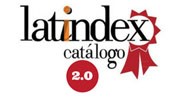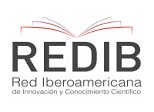Techniques and Strategies for Reading Comprehension: a Didactic Proposal
DOI:
https://doi.org/10.69890/hallazgos21.v8i2.624Keywords:
Methodological proposa, reading comprehension, methodological process, techniques; didactic strategies.Abstract
During the last decades, both theoretical specialists and teachers have set out to find, from a critical, cognitive, or constructivist perspective, new teaching strategies based on a better understanding of the processes involved in reading comprehension, to incorporate them into the theoretical framework of reading. teaching. It was guided by this search that a study was carried out to identify the level of reading comprehension possessed by the students of the third year of Basic General Education of the San José Benito Cottolengo Educational Unit. The low results of this research gave the guidelines for the objective of the study presented here: to design a didactic proposal with techniques and strategies to promote reading comprehension in said students. A qualitative study was carried out, with a descriptive-explanatory approach, in which the techniques of the semi-structured interview were applied to the teachers of the year and the documentary study, with searches in the databases and virtual libraries of Scopus, SciELO, and Google Scholar, and using the keywords reading comprehension, inferential reading, critical reading, metacognitive strategies and teaching strategies. The results showed that there are shortcomings and weaknesses that are limiting a more accelerated progress of the students, among which are the reduced types of cognitive, metacognitive and resource management strategies that are used in the teaching of reading classes when based only on the organization of sentences in small paragraphs, self-assess your reading comprehension, questions about reading topics, sentence transformation of a text and reading speed monitoring. It is concluded that this didactic-methodological process used by teachers limits the progress of reading comprehension to the desired level, so it is imperative to execute the didactic proposal resulting from the present investigation.
References
Acosta Sotomayor, A. J., & Aguilar Aguilar, M. F. (2016). Estrategias didácticas para la consolidación del hábito de lectura. Estudio dirigido a los niños y niñas de 7 a 9 años de la "U.E. Félix Leonte Olivo". Universidad de Carabobo. Facultad de Ciencias de la Educación.http://hdl.handle.net/123456789/3559
Aguilar Pomares, X., Cañate Álvarez, S., & Ruiz Chávez, Y. (2015.). El cuento: Herramienta para el aprendizaje de la comprensión lectora en preescolar y básica primaria. Universidad de Cartagena. https://repositorio.unicartagena.edu.co/handle/11227/2545
Alliende, F., & Condemarín, M. (2002). La lectura: teoría, evaluación y desarrollo. Chile: Editorial Andrés Bello.
Benalcázar Pozo, E. M. (2016). Estrategias didácticas para el desarrollo de la Comprensión lectora del 4to año de Educación General Básica (Tesis de maestría). Universidad Regional Autónoma de Los Andes (UNIANDES). Ambato. https://dspace.uniandes.edu.ec
Boekarts, M., & Castellar, E. (2006). How far have we moved toward the integration of theory and practice in self-regulation. Educational Psychology Review, 18 (3), 199-210.
Colomer, T., & Camps, A. (1996). Enseñar a leer, es enseñar a comprender. Madrid: Celeste Ediciones.
Defior, S. (2000). Las dificultades de aprendizaje: un enfoque cognitivo. Málaga: Aljibe.
Delors, J. (1998). La educación encierra un tesoro. Informe de la UNESCO de la Comisión Internacional sobre la Educación para el siglo XXI. http://www.unesco.org/delors/delors_s.pdf: UNESCO.
Durkin, D. (1993). Teaching them to read. Boston: Allyn and Bacon.
Espejo, R., & Sarmiento, R. (2017). Metodologías activas para el aprendizaje. http://www.ucentral.cl/prontus_ucentral2012/site/artic/20170830/asocfile/20170830100642/manual_metodologias.pdf
Giménez, V. (2014). La biblioteca escolar: La lectura desde la adolescencia. Revista sobre la infancia y la adolescencia, 6(1), 22-30.
Goetz, J., & LeCompte, M. (1988). Etnografía y diseño cualitativo en investigación educativa. México: Morata.
Hacker, D. (1998). Self-regulated comprehension during normal reading; en Hacker (Ed.): Metacognition in educational theory and practice, Nueva York: Lawrence Erlbaum Associates.
Hernández- Sampieri, R., Fernández-Collado, C., & Baptista, P. (2016). Metodología de la Investigación. México D.F., México: McGraw-Hill Interamericana.
Hoyos, A., & Gallego, T. (2017). Desarrollo de habilidades de comprensión lectora en niños y niñas de la básica primaria. Revista Virtual Universidad Católica del Norte, 51, 23-45. http://revistavirtual.ucn.edu.co/index.php/RevistaUCN/article/view/841/1359
Ibáñez, R. (2007). Comprensión de textos disciplinares escritos en inglés. Revista de Lingüística Teórica y Aplicada, 45 (1), 67-85.
Lara Calderón, E.M., & Salazar Tuarez, E. A. (2019). Competencia Lectora de los Estudiantes que Ingresan a la Secundaria en la Unidad Educativa Fiscomisional Sagrado Corazón. Revista Científica Hallazgos21, 4(3), 240-249. http://revistas.pucese.edu.ec/hallazgos21/
Loor Gamboa, A. M. (2014). Comprensión Lectora y su relación en el desempeño académico, de los niños y niñas de segundo año de Educación General Básica de la Unidad Educativa “Quintiliano Sánchez Rendón”, cantón Buena Fe, provincia de Los Ríos (Tesis de licenciatura). Universidad Técnica de Babahoyo. http://dspace.utb.edu.ec/handle/49000/2838
Marr, M. B., & Gormley, K. (1982). Children’s recall of familiar and unfamiliar text. Reading Research Quarterly, 18, 89-104.
Mayer, R. E. (2002). Psicología educativa. Madrid: Prentice-Hall.
Mena- Bernal Rosales, I. (2019). Comprensión lectora en primeras edades: una propuesta de intervención en torno al álbum ilustrado. Facultad de Filología Universidad de Sevilla. https://idus.us.es/handle/11441/89736
Muñoz, L. (2015). Trascendencia de la lectura comprensiva en el proceso de aprendizaje de los estudiantes de primero de bachillerato de la Unidad Educativa Ángela Aspiazu de Chambers” (Tesis de Pregrado). Universidad de Guayaquil, Guayaquil, Ecuador. http://repositorio.ug.edu.ec/bitstream/redug/10148/1/Tesis%20Lissette%20Mu%C3%B1oz..pdf
Paris, S. G., Wasik, B. A., & Turner, J. C. (1991). The development of strategic readers. En R. R. Barr, M.L. Kamil, P. Mosenthal, & P. D. Pearson (Eds.). The handbook of reading research,Vol. 2; 609-640. New York: Longman
Pressley, M. (2002). Metacognition and self- regulated comprehension; en Farstrup & Samuels (Eds.): What research has to say about reading instruction, Newark, Delaware: International Reading Association.
Rodríguez Estrada, M. N., & Monsalvo de Ortega, C. M. (2016). Estrategias didácticas para la comprensión lectora en estudiantes de segundo grado de la básica primaria. Gestión, Competitividad e innovación, 1-14. https://pca.edu.co/editorial/revistas/index.php/gci/article/view/55/53
Silva-Zavaleta, S. (2021). La comprensión lectora y los avances en la educación básica regular. Polo del Conocimiento, 6(1), 963-977. doi:http://dx.doi.org/10.23857/pc.v6i1.2193
Solé, I. (1996). Estrategias de lectura, Barcelona: Grao.
Taylor, B. M., & Beach, R. W. (1984). The effects of text structure instruction on middle grade students’ comprehension and production of expository text. Reading Research Quarterly, 19(2), 134-146.
Winne, P. H., Graham, L., & Prock, L. (1993). A Model of Poor Readers Text Inferencing: Effects of Explanatory Feedback. Reading Research Quarterly, 28(1), 52-66.
Yana, M., Arocutipa, A., Alanoca, R., Adco, H., & Yana, N. (2019). Estrategias cognitivas y la comprensión lectora en los estudiantes de nivel básica y superior. Revista Innova Educación, 1(2), 211-217. https://doi.org/10.35622/j.rie.2019.02.007
Published
How to Cite
Issue
Section
License
Los artículos enviados a la Revista Científica Hallazgos21 deberán ser totalmente originales e inéditos.
Los autores son los responsables de los textos y las imágenes incluidas en los artículos y no necesariamente reflejan el pensamiento de la editorial o de la Pontificia Universidad Católica del Ecuador, Sede Esmeraldas (PUCESE).
Los autores disponen cederle a la Revista Científica Hallazgos21 todos los derechos inherentes para la edición, publicación y distribución o divulgación del mismo.
Se autoriza a las revistas firmantes de los acuerdos de Encuentros de Revistas Latinoamericanas para reproducir en parte o totalmente los artículos con la sola mención de la fuente claramente señalada.







